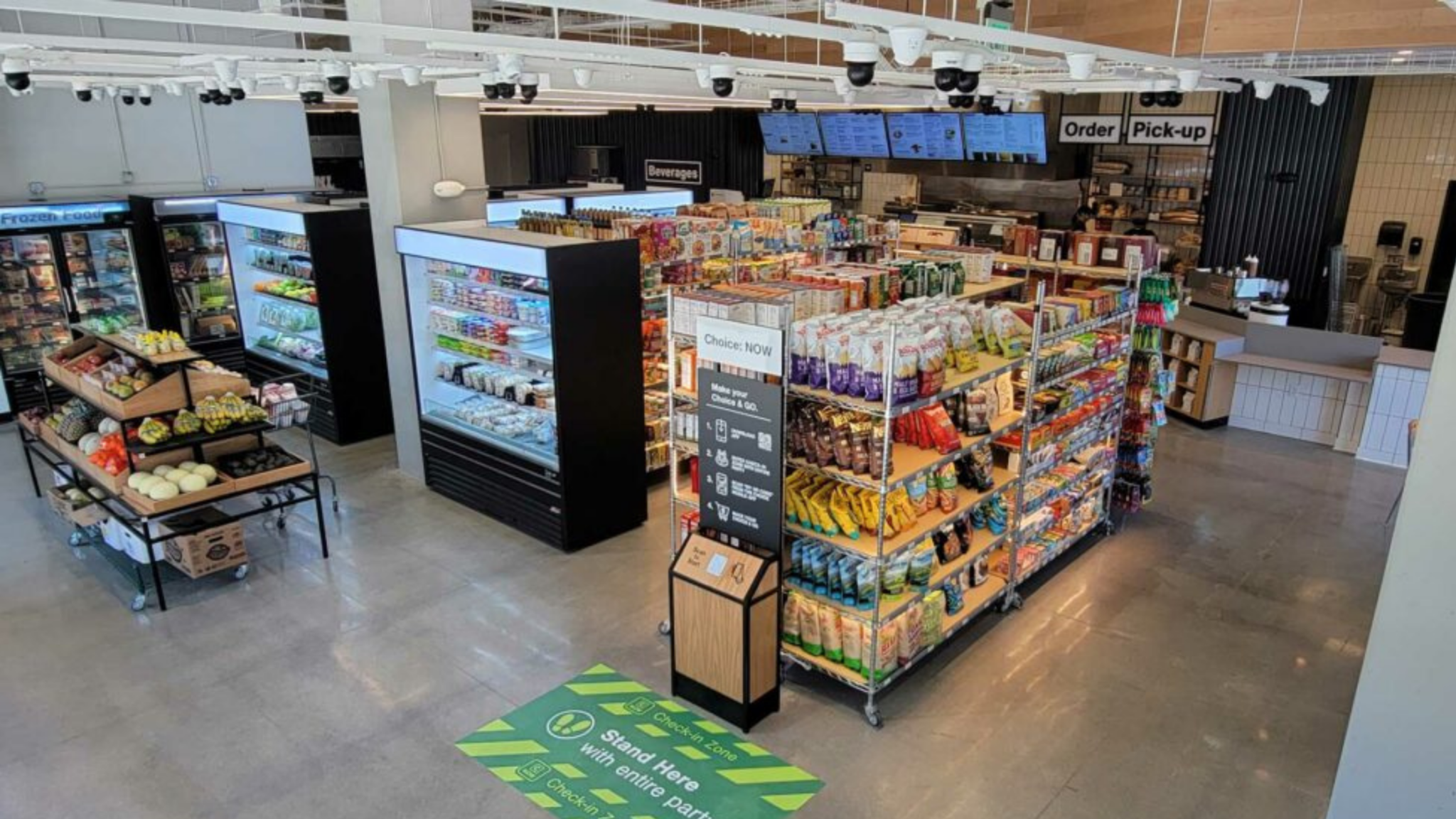
05 May Seeing is Believing: An Introduction to Computer Vision Technology for Autonomous Stores
As the development of autonomous stores expands across the globe in convenience stores, stadiums, arenas, grocery stores, and other spaces, it’s no surprise that the use of computer vision is also expanding.
Autonomous stores rely on a variety of technologies to enable customers to shop without the need for cashiers or other human assistance. One of the most important of these technologies is computer vision, which allows the store to "see" and track customers and products in real-time.
As the development of autonomous stores expands across the globe in convenience stores, stadiums, arenas, grocery stores, and other spaces, it’s no surprise that the use of computer vision is also expanding. According to MarketsandMarkets™, the global AI in computer vision market is forecast to reach a value of USD 17.2 billion in 2023. By 2028, the market is expected to be valued at USD 45.7 billion, growing at a CAGR of 21.5%.
But what really is computer vision? And what role does it play in the development of autonomous stores? In this article, we’re providing an introduction to computer vision technology and showcasing how it is used in autonomous stores. Let’s dive in!
What Is Computer Vision?
Computer vision is a field of artificial intelligence (AI). Essentially, this technology enables machines to interpret and understand visual data gathered from their environment. It’s as if the camera is an eye and the AI platform behind the eye is a brain, turning all the images into understandable insights and data. By using algorithms and machine learning, computer vision technology can analyze, recognize, and extract valuable information from digital images or videos in real-time. Yes, it’s that fast—like microseconds fast.
Here’s How AiFi’s Computer Vision Technology Works:
AiFi’s camera-only AI platform begins tracking shoppers as they enter the store using keypoint tracking technology that creates a unique, 100% anonymous individual. It is important to note, however, that AiFi’s platform is open and we can work with partners to help customers integrate biometrics when desired. Take a peek at AiFi in action:
Additionally, product and shopper tracking cameras identify items customers interact with, offering enhanced scalability. AiFi’s AI-powered frictionless checkout provides shoppers with a convenient, accessible, and personalized experience to purchase items in-store without having to wait in line or stop to scan or pay.
Learn more about AiFi’s AI-powered platform.
Computer Vision vs. Sensors
Some autonomous stores utilize sensors rather than computer vision to detect which items have been taken off of shelves. However, this technology is often limited in its ability to analyze and interpret visual data, leading to inaccurate outcomes. Sensors typically use physical or chemical properties such as temperature, pressure, or light to detect objects, whereas computer vision technology uses complex algorithms and machine learning models to analyze and understand visual data.
Thus, computer vision provides a more detailed understanding of the store environment. This means that it can track customers and products with greater precision, enabling more seamless and efficient shopping experiences—no over or undercharges or inaccurate inventory! Not to mention, this technology is extremely flexible, allowing business owners to scale their inventory and store layout in a variety of different retail environments.
But one of the top reasons computer vision is superior to sensors is its ability to monitor and analyze store traffic patterns to optimize store layouts and improve customer flow. Some would argue that computer vision systems are even bringing the power and insights of e-commerce to brick-and-mortar stores.
The image below depicts the insights computer vision generates via the AiFi Platform:

Why Is Computer Vision Great for Autonomous Stores?
Computer vision technology plays a crucial role in enabling autonomous stores to operate without the need for human intervention. By using camera-only technology throughout the store, computer vision systems can:
- Accurately track customers and products in real-time
- Identify and authenticate customers
- Process transactions automatically and accurately
In addition to providing a more seamless shopping experience, computer vision technology offers a scalable solution for retail shops of all sizes. By automating various tasks such as product identification, pricing, and checkout, businesses save time and resources while providing a more efficient and personalized service to their customers.
Consider this example. In an autonomous store, computer vision technology can identify the various products a shopper selects, puts back on the shelf, or walks out of the store with, in real-time. Thus, it provides a more seamless and convenient shopping experience for customers as they can simply grab the products they need and leave the store without having to wait in long checkout lines or interact with cashiers.
Meanwhile, for the business and its stakeholders, computer vision technology helps to:
- Reduce operational and labor costs (less employees needed!)
- Improve inventory management (clear imaging provides accurate data and analytics)
- Enhance the overall shopping experience for customers (leveraging analytics to enhance the customer experience)
Final Thoughts
The demand for more convenient and efficient shopping experiences is on an exponential trajectory. Therefore, we expect computer vision technology to become an increasingly important tool for businesses looking to improve the in-store experience and lower operational costs.
In short, computer vision technology is transforming the way we shop and interact with retail spaces—and it’s pretty awesome.
If you’re a business owner looking to leverage the benefits of computer vision technology for your store and have questions about implementing this technology into your store, get in touch with us. We’d be happy to guide you through the process and answer any questions you may have.





















